Customers typically purchase Salesforce with the objective of either improving the sales process and the way the business tracks data or getting better at tracking the value of pipeline. These two objectives are intertwined and reliable forecasts are not possible without high user adoption, but the focus of this article is forecasts and the way these are managed in Salesforce.
The Forecast features in Salesforce are comprehensive and capable, but they are regularly under-employed in Salesforce instances. Businesses will often have some visibility of Pipeline and Opportunities in a dashboard. However, using the designated Forecast tools provide much more than pipeline dashboards, not least the fact that they are designed to be a ‘collaborative’ tool that the salesperson and sales manager can use to interrogate the veracity of the data that supports the forecast. Forecasts are also focused on a particular period, typically a month or a quarter; shifting the focus to deals that are happening now.
This article explores some of the key features and characteristics of Salesforce Forecasts and the value they can add to organisations.
Forecast Types
Forecasts can be based on revenue or quantity measures and can support team selling/splits. There are additional options to group by sales territories and products. This means the business can have visibility of banked sales and pipeline across product lines, territories (either geographical, vertical-based or other types of territories) and, as we will explore below, across revenue-scheduled models like subscription revenue.
Forecast Categories
A business might have a number of different Opportunity Stages and perhaps more than one Opportunity ‘Type’. It can be challenging for board level colleagues to understand the significance of different Opportunity stages and to know which ones are truly significant. Step forward Forecast Categories!
Forecast Categories give the business a view of possible outcomes. For example the business might simply want a view of the opportunities that are ‘Closed Won’, the opportunities that are already signed and delivered. Most businesses, however, will want to forecast ‘open’ Opportunities and will use Salesforce Forecasts to model a ‘Commit’ bet (the Opportunities that the salesperson has determined will complete), a ‘Best Case’ bet (those that should complete) and ‘Pipeline’ (those that might complete).
Forecast Hierarchies
Forecast Hierarchies allow for teams to be organised in a hierarchical structure and to provide viewing rights over Opportunities based on a user’s position within the hierarchy. This allows managers to see their team’s forecasts, but teams cannot see forecasts belonging to their teammates.
Revenue Schedules
This is a must for any businesses selling products or services on a subscription basis of where the revenue from a sale is distributed, i.e. where the revenue from sales is not credited to the business in a lump sum at the Close Date. Revenue Schedules help to ‘smooth-out’ revenue according to the reality of when it is expected; leading to a more accurate forecast.
Quotas
Quotas help the business understand how its revenue goals will be attained as part of a team effort. For example, if the business expects an annual revenue of £120 million and a sales team of 10 FTE, it can assign a quota of £100k per month to each member of the team. In reality, of course, a business would allow for annual peaks and troughs in sales, but the Quota functionality is key to apportioning responsibility for an organisational target.
Manager Adjustments
Manager adjustments allow salesforce users to adjust their own forecasts and managers to adjust the forecast of the colleagues below them in the forecast hierarchy. The purpose of adjustments is to provide an overview/context around a figure in the forecast. For example, if a deal is significantly larger than the average deal size, a forecast manager might decide to offset the risk of that deal not materialising by adjusting the month and category that this deal falls within.
Historical Trending
Historical Trending allows users to visualise performance against past reference periods. For example, if your forecast is monthly, you can see how your current results at this point in the month compare to previous months. This will help the business understand whether the team is tracking to hit their sales goals based on performance in previous periods. The data presented will depend on the period of time for which data has been retained.


